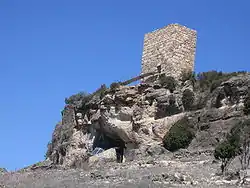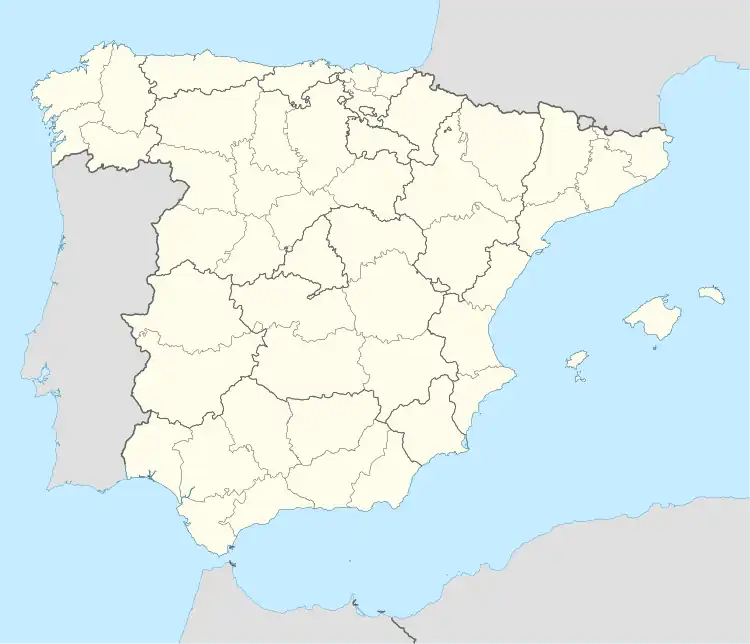| Cueva de los Casares | |
|---|---|
| Native name Spanish: Cueva de los Casares | |
 | |
| Location | Riba de Saelices, Spain |
| Coordinates | 40°57′27″N 2°17′27″W / 40.9575°N 2.290928°W |
| Official name | Cueva de los Casares |
| Type | Non-movable |
| Criteria | Monument |
| Designated | 1935 |
| Reference no. | RI-51-0001089 |
 Location of Cueva de los Casares in Spain | |

Cueva de los Casares is a cave in Riba de Saelices (Province of Guadalajara, Castile-La Mancha, Spain). Discovered in 1933, it contains a number of paleolithic cave paintings, and is most notable for a series of paintings depicting what some have argued is the earliest representation of human understanding of the reproductive process, featuring images of copulation (perhaps mediated by a mysterious shaman figure), pregnancy, childbirth, and family life. Mammoths and other animals feature frequently in the illustrations. It was declared Bien de Interés Cultural in 1935.[1]
There are many representations of animals, anthropomorphs (human-like figures), and ideograms (including penises, vulvas, tools, and more abstract images).
The cave and its paintings are little known to scholars outside Spain.
References
- ↑ "Consulta a la base de datos de bienes inmuebles". Gobierno de España (in Spanish). Retrieved 2 June 2018.
External links